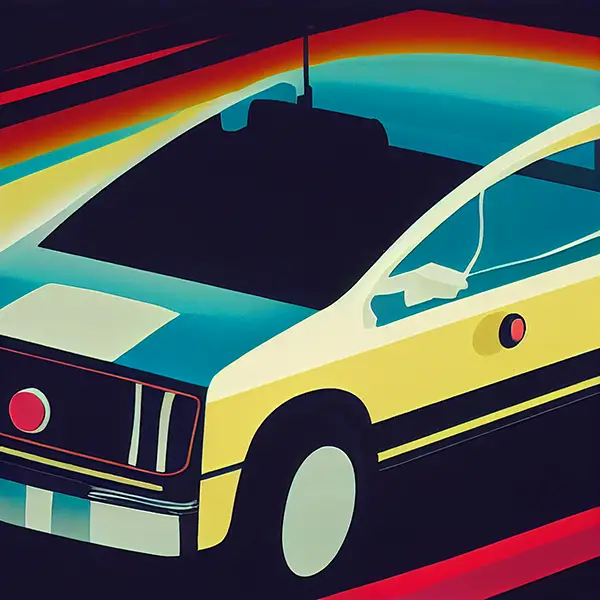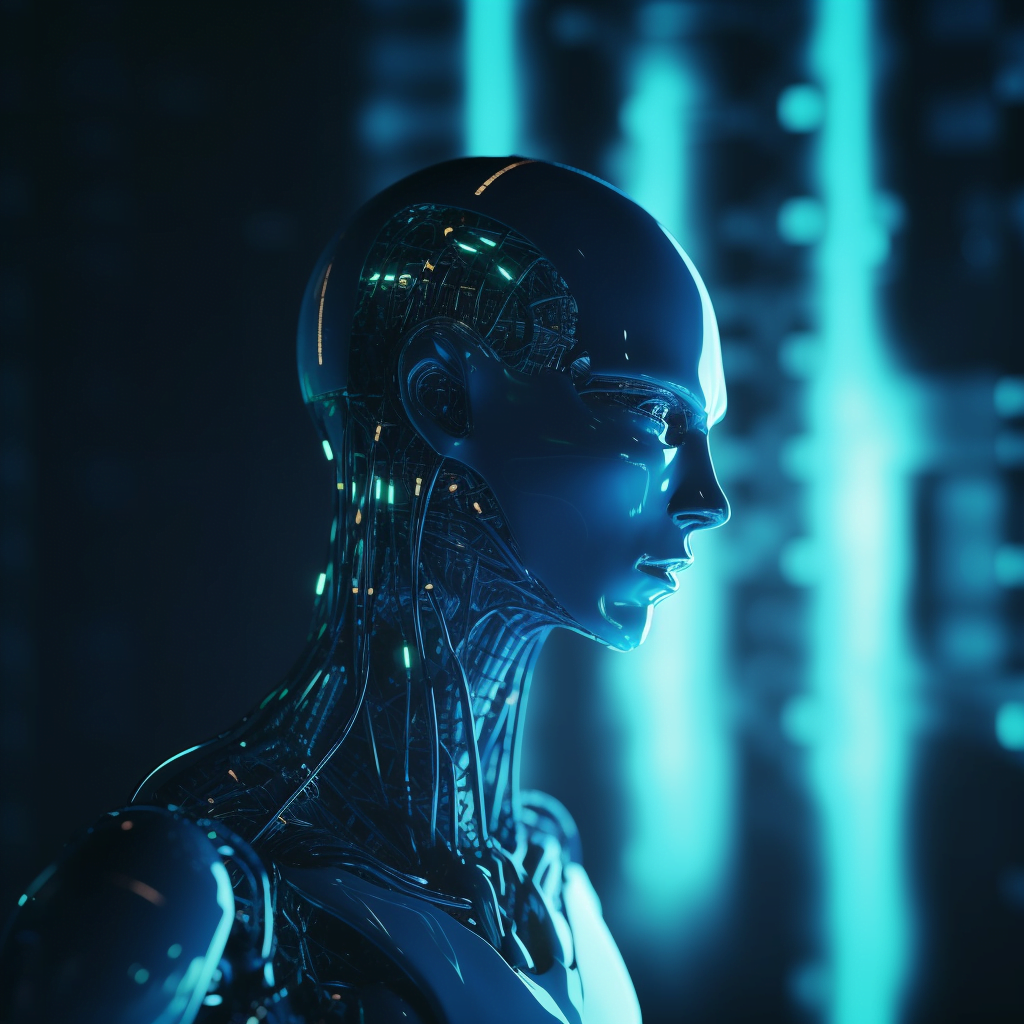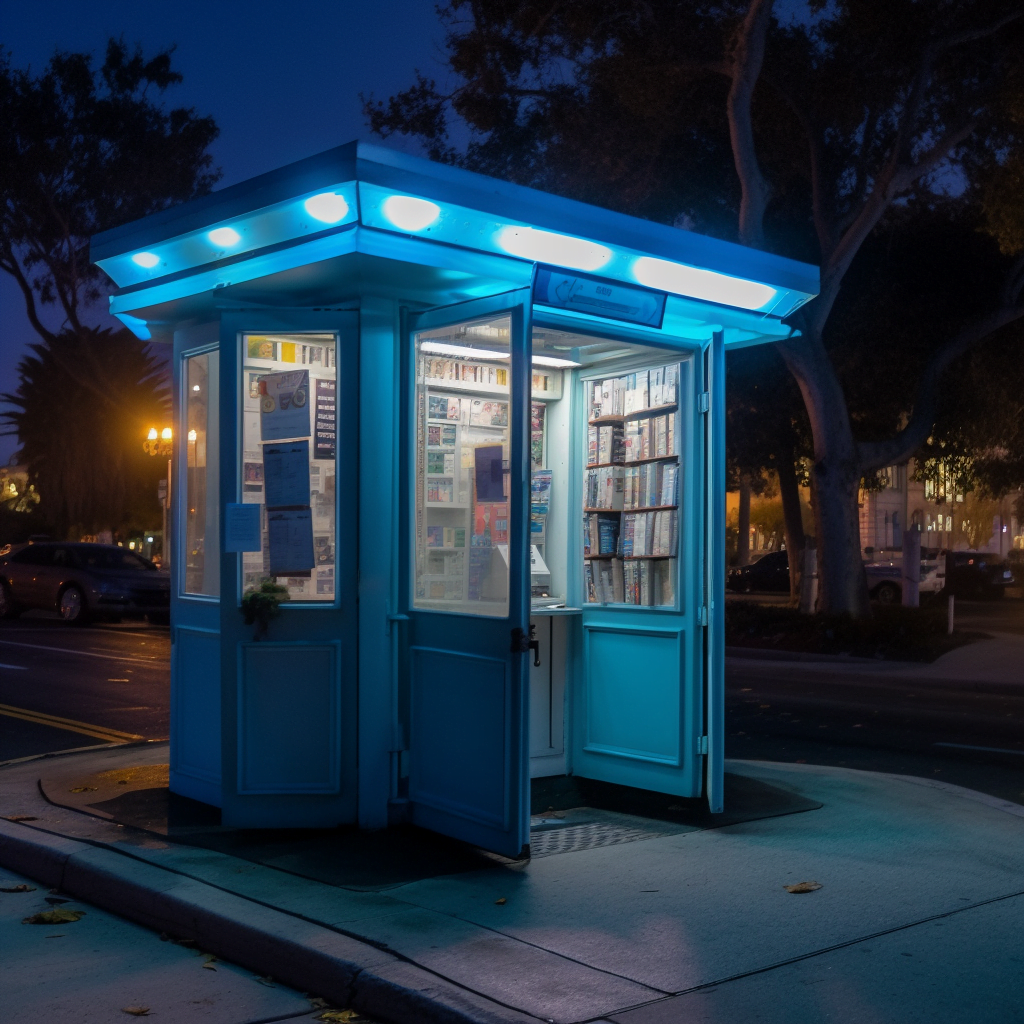
When will self-driving cars be truly ready for the public?
“When I put my 2 kids in there without me” — Aicha Evans, CEO of Zoox
Over the past few years, self-driving cars (also called AV for automated vehicles) have become a hot topic.
Why?
Because if they can get the technology right — and it’s looking like they will soonish — the AV industry has the potential to upheave many aspects of our daily life.
And I don’t say that last sentence lightly.
Here’s a look at many interesting and strange ways self-driving vehicles will affect our future.
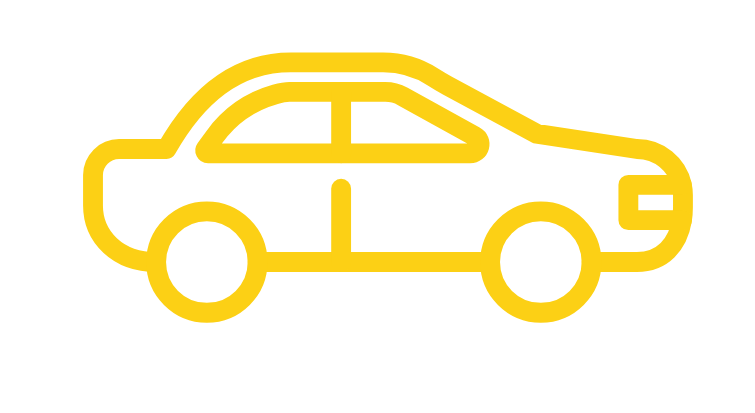
Taxis
One of the first things people usually think about when they hear of self-driving cars is their potential to replace taxis.
They call them robo-taxis — and they’ll be in a neighborhood near you soon enough.
Even with the advent of Uber and similar services, taxis are a huge industry around the world. It’s estimated to be a $32 billion industry in the US alone in 2020 — and it’s growing (barring the setback of COVID).
And even though there are a lot of mixed feelings about the age of Uber and its effect on transportation, a massive shift to automated vehicles would be apocalyptic in comparison.
There’s estimated to be over 3.9 million Uber drivers today— not even looking at other services like Lyft, Grab, or traditional taxis and limousine companies.
That’s a lot of people that could potentially become unemployed.
What will they do instead?
I have a feeling the argument for universal basic income might become stronger in the coming years as more technology like this becomes available.

Trucking
Do you feel comfortable driving on highways beside trucks? I never have been — especially when they’re overtaking other drivers or speeding too much.
We’ve all seen those horrific news stories of a pile-up involving massive trucks. Terrifying.
But how would you feel if you looked to your right and saw the skyline through the truck’s window, absent the usual trucker’s profile?
Trucking is an extremely important service in our economy. Nearly all of our food and products are transported by these long-haul drivers.
What will the 3.5 million truck drivers do for employment instead?

Buses
Public transportation is another area ripe for replacement with automation.
But much like trucks, buses are large awkward vehicles. And also like trucks, their purpose is to carry goods over long distances — in this case, people.
That requires an extra layer of care and potential problems for the programmers.
City buses versus long distance vehicles will face different problems. City buses inherently have large routes with dozens of stops. They also have to navigate pedestrians, bicyclists, and vehicles on the road in order to pull over at bus stops.
All of these present more problems for the people designing these vehicles of the future, but it seems like they are edging closer to solving them.

Airplanes
It’s hard to imagine, but they’re working on automating the big steel birds in the sky as well. Our large passenger jets are already quite automated — for certain functions.
And I’m sure you’re aware we have military drones flying around without pilots, albeit with a human controller behind it.
It’s only a matter of time before they modify passenger airplanes to fly us around as well, without a pilot in sight.
Although I have a feeling it might take a bit longer for society to be okay with this. Many people are already nervous enough while flying.

Trains
I’ve even been on an airport train in Singapore that was driverless. I didn’t have any fear as it was a slow-moving one in between different terminals.
Still, I remember the day I realized there was no driver seat.
The thought occurred to me that I had been on the same train a few times and on opposite ends of it. Nothing but window and wall. An odd feeling but I was more impressed than anything.
I was even more shocked when I found out the system has been running since 1990! What the…
Most trains operate on very specific schedules.
Have you ever had a chance to ride a high-speed train at over 220 miles per hour? It’s pretty damn cool to watch the landscape fly by you, while still seeing the absolute precise stops in the stations.
This type of transportation lends itself to automation due to the rigidity of the schedule and the fewer unknowns that can cause accidents (compared to other types of transportation).

Death
It’s not just technology that will be impacted — there will be plenty of side effects from these advancements.
One big one will be fewer deaths in many different areas.
There’s no way that governments will allow driverless technology to be widespread on our roads, skies, and tracks if it hasn’t been proven to be extremely safe.
But then again, what’s safe in this context?
In 2015, the average fatalities per 100 million miles driven was at about 1.03 deaths (out of a crazy total of 3.113 billion miles driven that year).
When compared to accidents that caused any kind of injury (and were reported), the number flies up to 201 accidents per 100 million miles driven.
Will your government allow a driverless car on the road if it just barely beats these scores? Or will they require something much closer to 100% safety rating.
I wouldn’t be surprised if acceptable rates for these metrics had to reach levels approaching 1–10% before they’d be considered acceptable.
Either way, if it’s higher than the human version — and consistent — human society will suffer fewer accidents and deaths from traffic injuries.
A very good side effect of this technology.

Crime
Would Siri ever rat you out to the cops? Maybe.
It’s probably up to whatever requirements the individual governments enforce on the vehicle manufacturers.
- Would Siri call 911 if I was smoking an illegal substance behind the virtual wheel?
- What if I was having sex?
- What if I was being attacked?
- How would Siri even know the difference in some cases?
You can also say goodbye to grand theft auto charges — at least in the old sense of the term. Perhaps new methods will be developed by nefarious hackers to steal cars.
But even then, with all the tracking, cloud software, and additional automation involved — it’s hard to think this could still be a major problem after.
But that leads to the final scary point about this. Hacking.
What happens if an airline full of passengers was somehow hacked by digital terrorists? Or a busy city’s traffic grid that’s now full of automated vehicles? Could they cause everyone to drive at full speed into each other? Could they hijack important people’s cars and hold them hostage or assassinate them?
Hell, they could even turn the family SUV into an RC car with a bomb attached to it.
Fun in GTA V, not in real life.

Labor market
You probably guessed that this would be on the list. We’re talking about millions and millions of people being displaced from their current jobs.
Society will need to find another way to keep them employed — or at least to not let them end up destitute.
Technology shifts always bring labor market challenges along with it.
From factories, farming, to telephones (those poor carrier pigeons) — people will need to adjust.
This is where governments tend to vary quite widely in their solutions — and there really hasn’t been a perfect one found in the past.
Retraining, education supplements, and job reallocation are just some of the solutions, but it certainly doesn’t help everyone.
I don’t think your grandpa wants to learn how to program IF statements in Python.

Traffic rules
How far will this technology go?
Is it that hard to imagine a future with a near-100% adoption rate of driverless vehicles?
Sure, people would be outraged at not being able to rip around in their 4×4 Jeep — how could you give the Jeep Wave in that case?
But when was the last time you found yourself driving alongside a horse on a highway? People still use horses, but not how they did traditionally.
I’m sure manually driven cars will still be around, but I’d imagine more for a recreational purpose than mainstream.
*Note: I did actually used to drive by many horses on highways (on the shoulders) — I grew up near a large Mennonite community in Canada.

Parking
Will Siri really need to wait for mom outside the mall while she shops for only “20” minutes? Maybe.
But if robo-taxis become much more prevalent, mom might not even need to own a car anymore.
Cars that we own today are only thought to be driven about 5% of the time. The rest of the time they’re parked at our homes or in parking lots.
And a massive amount of our urban cities are currently being used as parking spaces (despite never being able to find a parking spot):
- New York City — 1.85 million spaces
- Philadelphia — 2.2 million
- Seattle — 1.6 million
- Des Moines — 1.6 million
If we have thousands of autonomous taxis driving around — more efficiently and without taking breaks — there just won’t be as much of a need for parking anymore.
This study estimates that as much as 50–70% of parking spaces could be repurposed if the roads were entirely autonomous. That translates to an incredible amount of extra space for parks, forests, homes, and buildings.
Even if mom did own her own car, maybe she’d enroll it in an Uber-like service like Uber that would taxi around other people while she was busy.
This could allow her to earn more money to spend on all those clothes she was buying for 5 hours on a Saturday while her son was waiting in the car for the longest “20” minutes in the history of time.

Medicine
With all the rules and regulations governing prescription medicine today, people that have to take life-saving drugs regularly are often inconvenienced with the process.
Many drugs, especially painkillers, are not legally allowed to be given out in high doses depending on the region.
That means people have to repeatedly go back to the pharmacy to pick up doses every few days/weeks.
If you’re in that much pain already, do you really want to be doing that?
An autonomous delivery system with extra security protocols could be a lifesaver in this area — literally.
Imagine a small fleet of these driving around all day delivering medicine to those that need it.
Amazon is already delving into this area with their Prime Air service — albeit with autonomous drones instead.

Elderly
Elderly drivers (as well as mobility-impaired people) tend to be a concern on the road.
Different regions have different drivers license expiry dates, repeated testing after you reach a certain age, and outright disallowance of some drivers if they’re deemed unfit to drive.
Having an automated car drive them around would allow these individuals to regain a sense of freedom in a potentially sedentary lifestyle.
A huge plus in my books.
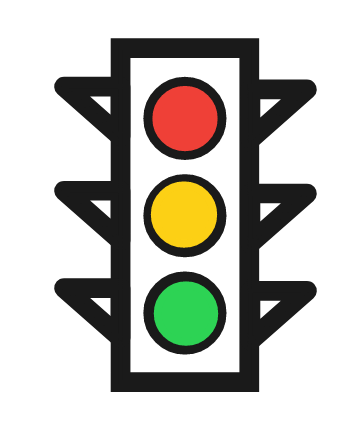
Traffic lights
Why would you need traffic lights if every car on the road is completely automated and aware of each other?
They’d probably already be connected to the grid anyway — and would be fully aware of what the light (virtual or real) would be.
Of course, that still leaves human walkers (I’m one of these despicable people that love to walk all the time — I don’t own a motor vehicle on purpose).
Perhaps traffic lights will turn into a more focused form of the current pedestrian light.
Or maybe our jetpacks will carry us over any crosswalks by then.

Legal
Would you still need a license to drive a car if it’s only for recreational use and in limited areas?
I don’t recall having to take 6 months of night time classes to ride a horse that one time in Cuba. (His name was Chester and he was the best horse ever.)
Even beyond driver’s licenses — what about all the other rules of the road?
- Would speed limits massively increase due to increased safety?
- Would there still be a need for turning signals?
- What about high-beams and lights if cars can see in other wavelengths and with additional tools?
- Will cars be allowed to be manually overridden so a driver can speed?
- Will horns still exist? Can an autonomous driver blaring a horn still be considered a bit of a dick?
- Will the other car be able to autonomously flip the bird back?

Insurance
Another interesting repercussion will be insurance. If we assume 100% adoption of automated vehicles on the road, who will bear responsibilities for crashes?
Once the algorithms are improved to the extent governments are comfortable allowing them on the roads, there will still be accidents.
Wheels pop, black ice slips, and snow slides.
Insurance will still be needed for a lot of cases — but probably not nearly to the extent today.
Americans spend an average of $1,348 on car insurance every year in 2020.
Why would we need to pay that much if the roads suddenly become 5 times safer?
But even before we get there, the adoption phase of this technology could be much more complex.
Imagine a road half-filled with automated vs manually driven cars.
I can make a bet on which side would be causing the majority of accidents in that scenario.
Not only would the burden of proof be radically changed (think of thousands of sensors recording all of the details of any accident), but who would be responsible?
- What if an AV’s behavior was unnatural compared to humans (even if it was the safer option)?
- Would the car manufacturer face any blame?
- Would the human driver be at fault almost 100% of the time?
- What about the human in the automated car, would they have an override function and be blamed for not using it?
Many questions still remain in this area.
One of the scariest ones may just be this:
Where will insurance companies makeup the lost revenue?
If you have fewer cars on the road, all getting in 99% fewer accidents, you can kiss most of those insurance premiums goodbye.
But I’m sure they’ll find another way to milk the public — just look at the health insurance industry in the US for a clue.
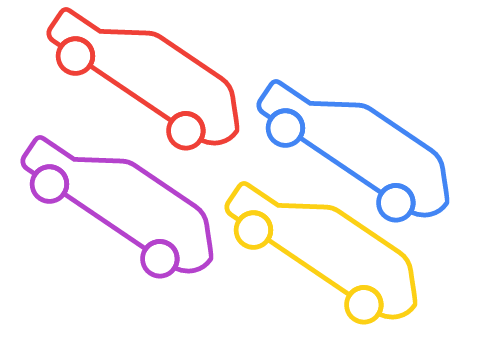
Traffic
With the massively increased efficiency of a network of cloud-connected cars, highways will start running like ants marching towards the last time I tried having a picnic — brutally efficient.
In the U.S. today, the maximum allowable capacity on a highway is around 2,200 passenger vehicles per hour, per lane. This equates to about 5% of the road being taken up at any given time.
If there were 100% adoption of self-driving cars, that number has been estimated to multiply up to 4–7 times!
Imagine your heavily congested morning commute suddenly taking only 20% of the time it currently does — I wouldn’t mind that at all.
Hell, if you’ve ever been to cities like Manilla, Jakarta, Los Angeles, or London — you can probably imagine what an 80%+ reduction in traffic could achieve.
For starters, a collective sigh of relief.
Highway rides could be drastically shortened with the increased speed limit and efficiency of the roadway.
If that wasted space is maxed out while still maintaining a huge level of safety — you’ll be driving across the country in hours not days.

Energy and fuel
There will be a lot more efficient driving as a result of this technology advancement.
Vehicles will brake and accelerate at much more fuel-efficient rates — saving a lot of energy over the long run.
The number of cars being owned and driving on the road will also substantially reduce.
If this becomes the case, then all of the environmental manufacturing costs associated with producing a car would be reduced significantly.
A car currently requires about an equivalent of 260 gallons of gasoline to produce just 1 unit. That’s not a small amount.
Any significant reduction in this area would be greatly appreciated by the environment, I’m sure.
On the other side of things, if transportation becomes ultra-cheap — people will travel a lot more. And use more energy as a result.
If long-distance commute times are also reduced drastically, we might see a move away from the cities to larger plots of land further outside of city centers.
This would result in a net increase in driving which wouldn’t help fuel consumption.
At the end of the day, any overall net reduction in fuel consumption is probably a good thing.
I’m tired of seeing hurricanes fly by every other week lately.

Takeaway
Self-driving cars, buses, trains, and airplanes are definitely in our future — even if it seems somewhat unimaginable now.
There are many hurdles still in the way not only in terms of development, but in culture, government regulations, and the impact on society at large.
And this massive change can leave us with important questions:
- Would you trust Siri to drive your kids to school?
- Would you be comfortable laying down to sleep while driving on a highway?
- If an autonomous car crashes in the woods without a passenger, does it make a sound?
And not everyone will be happy about it — I’m sure there will be mass protests by those affected negatively from it.
But at the end of the day, we can always look back to one of the previous largest industrial changes in the transportation arena — the invention of the car.
“If I had asked people what they wanted, they would have said faster horses.” — Herny Ford
If you found this interesting, come join my free newsletter for more deep dives, guides, and whacky attempts at humor. Thanks for reading!


